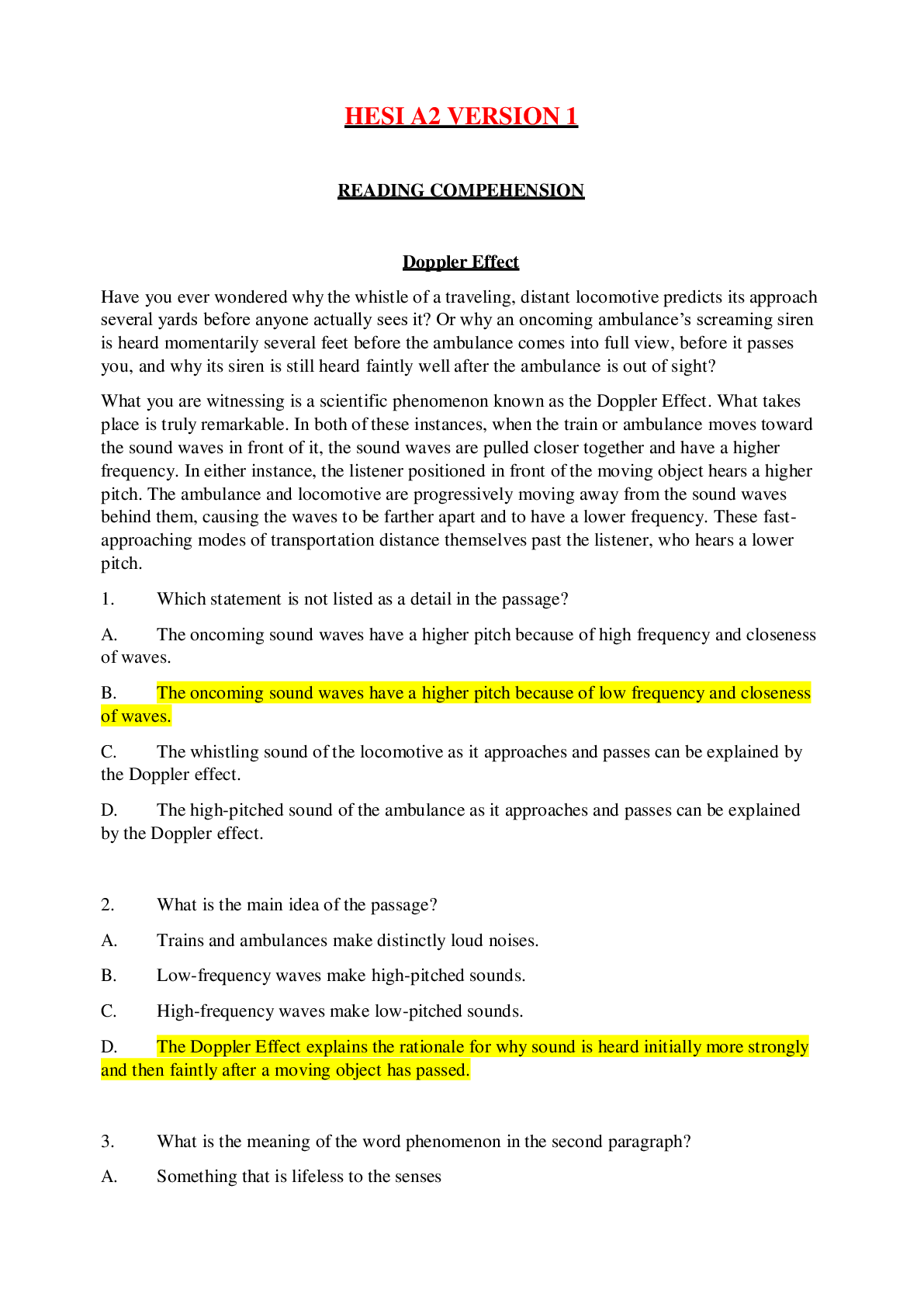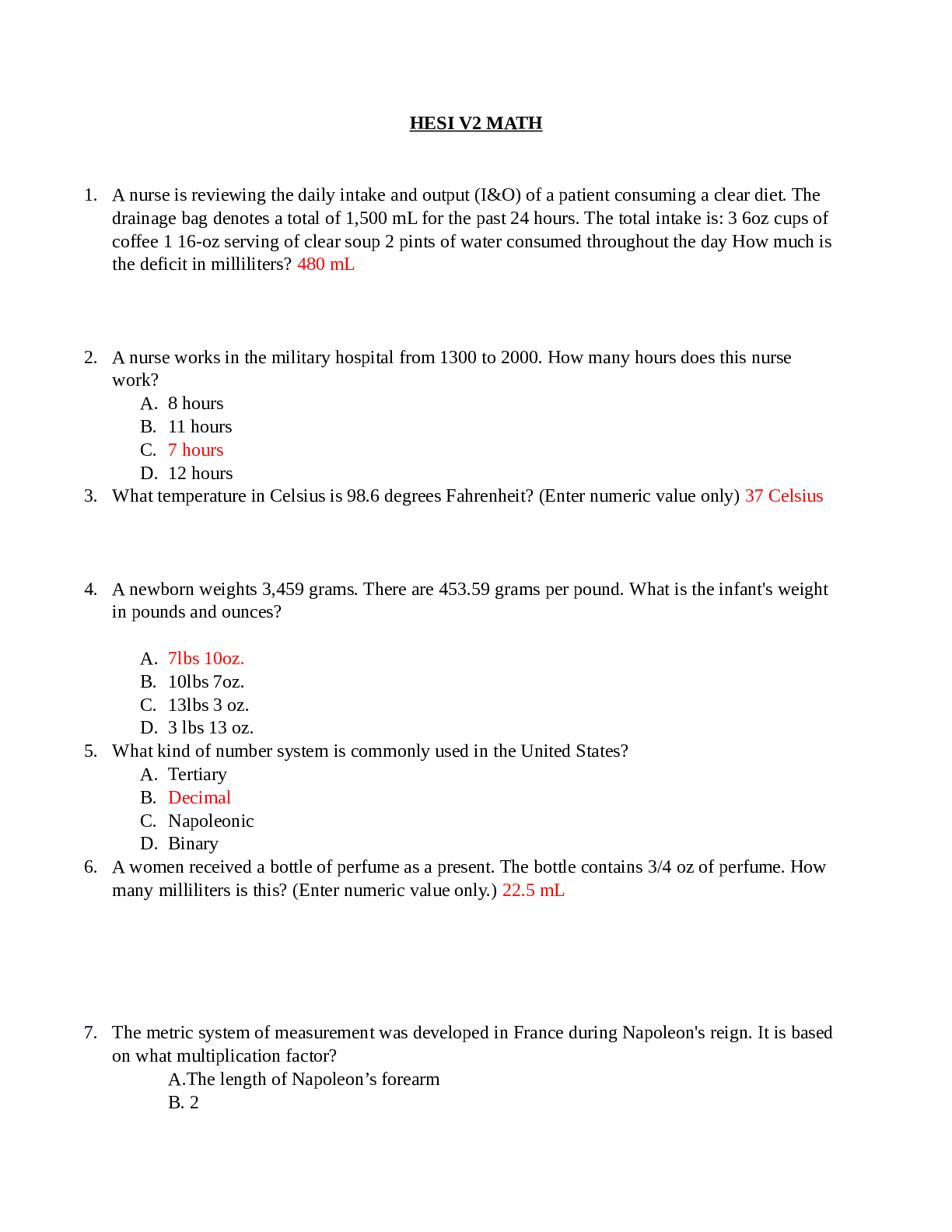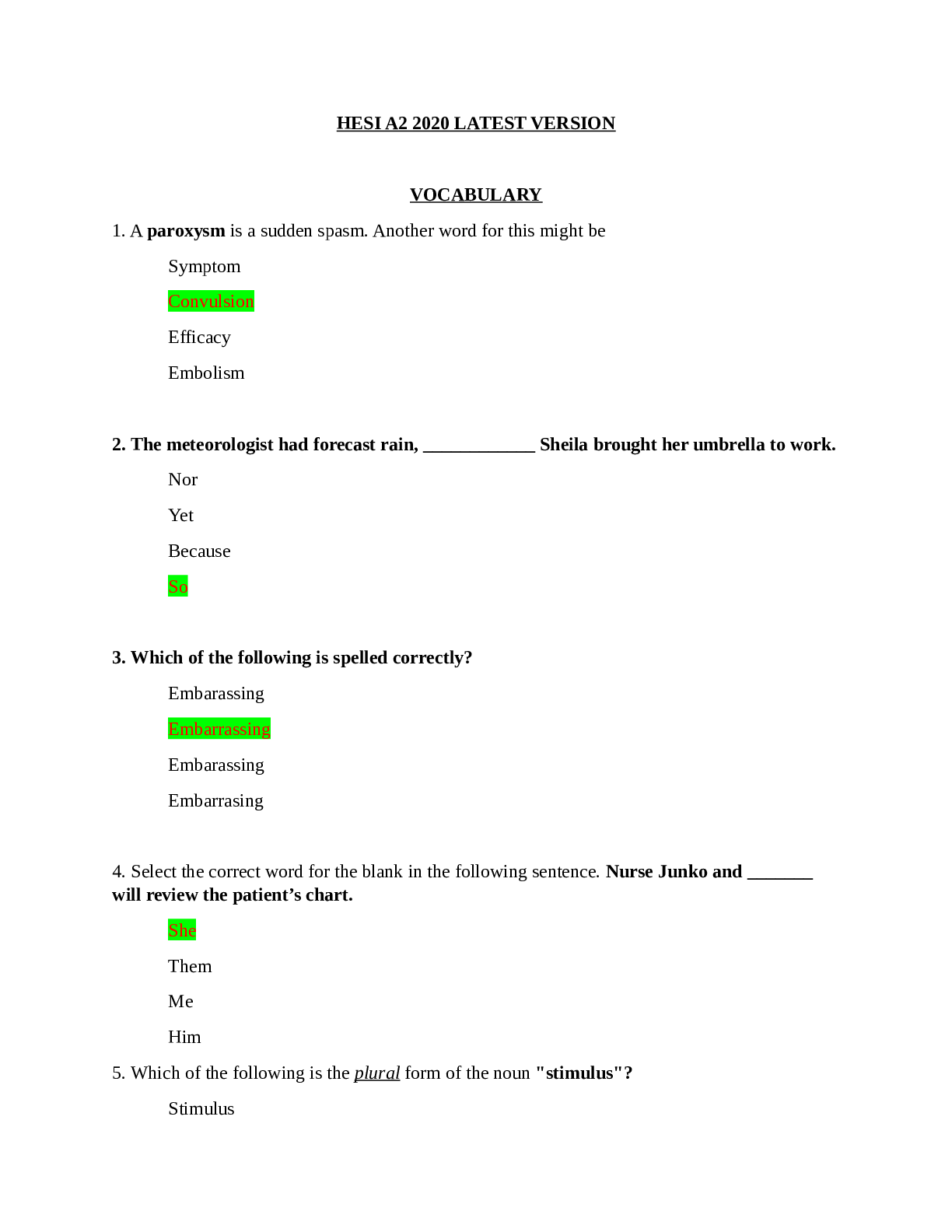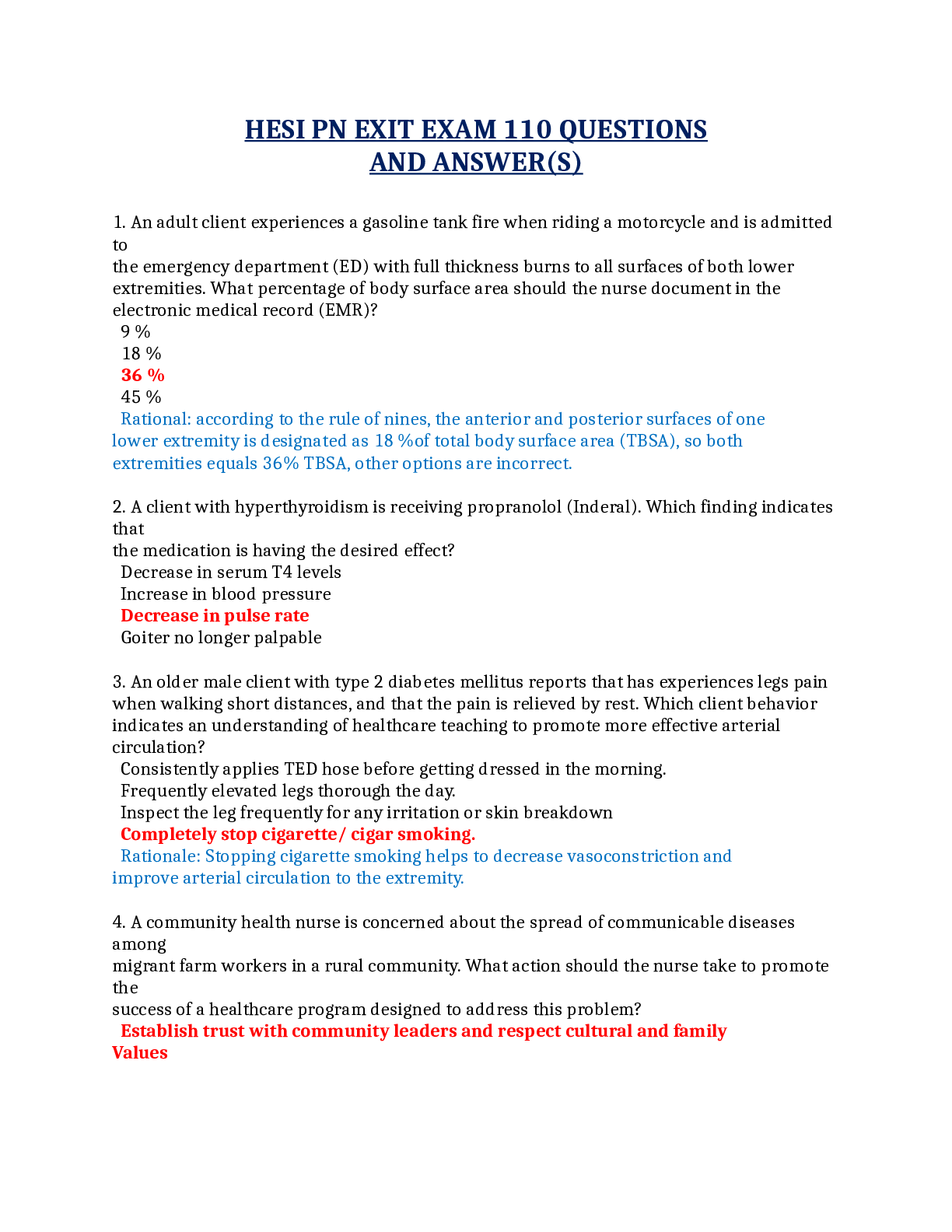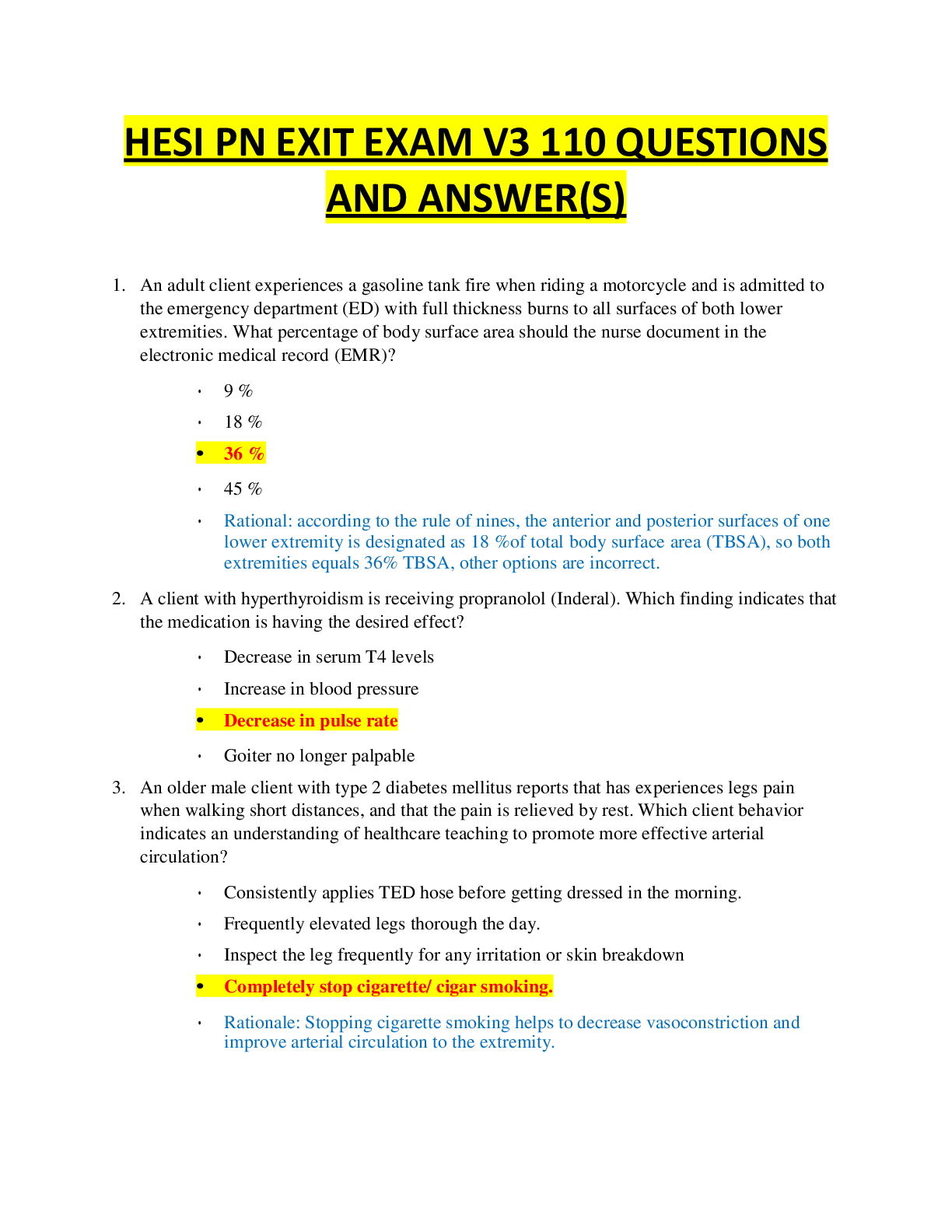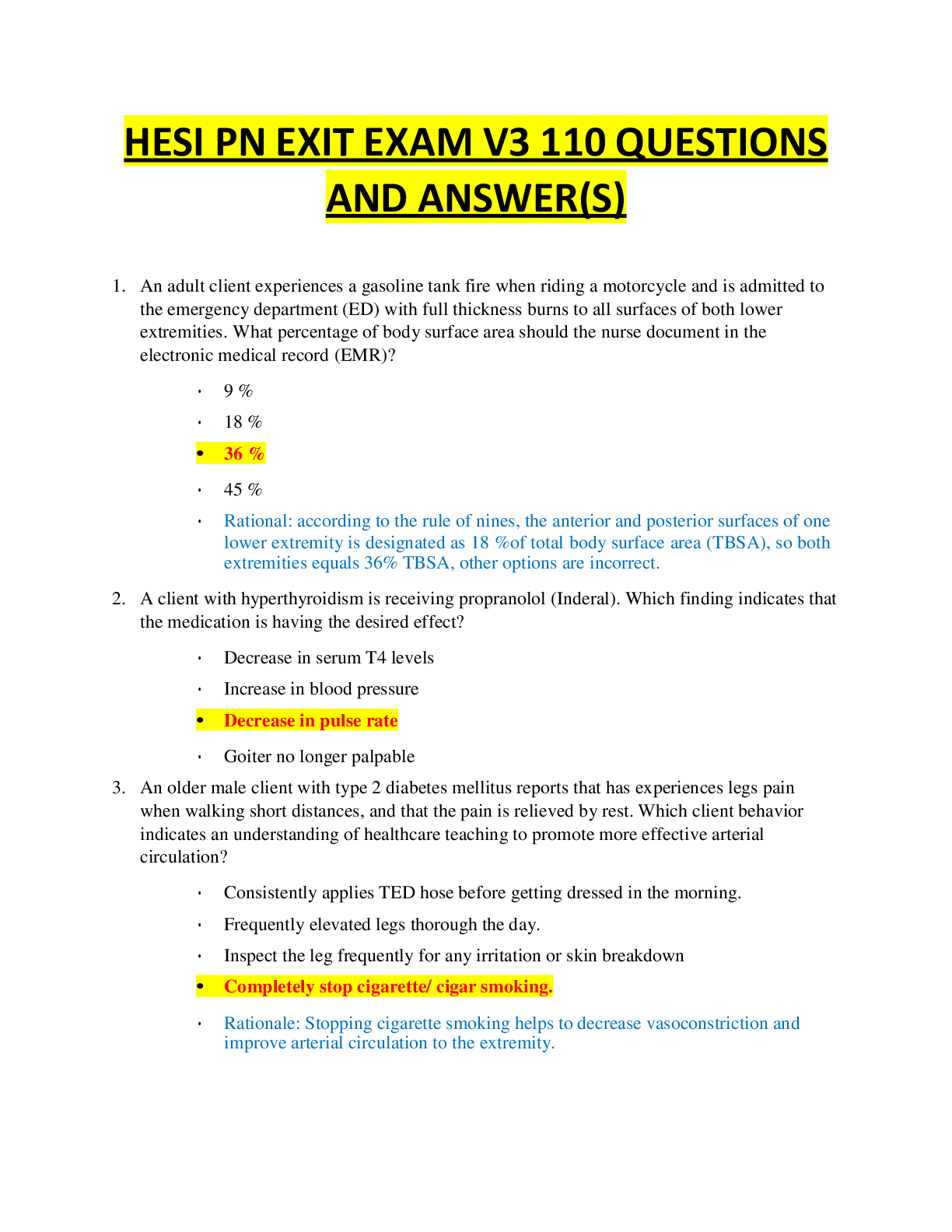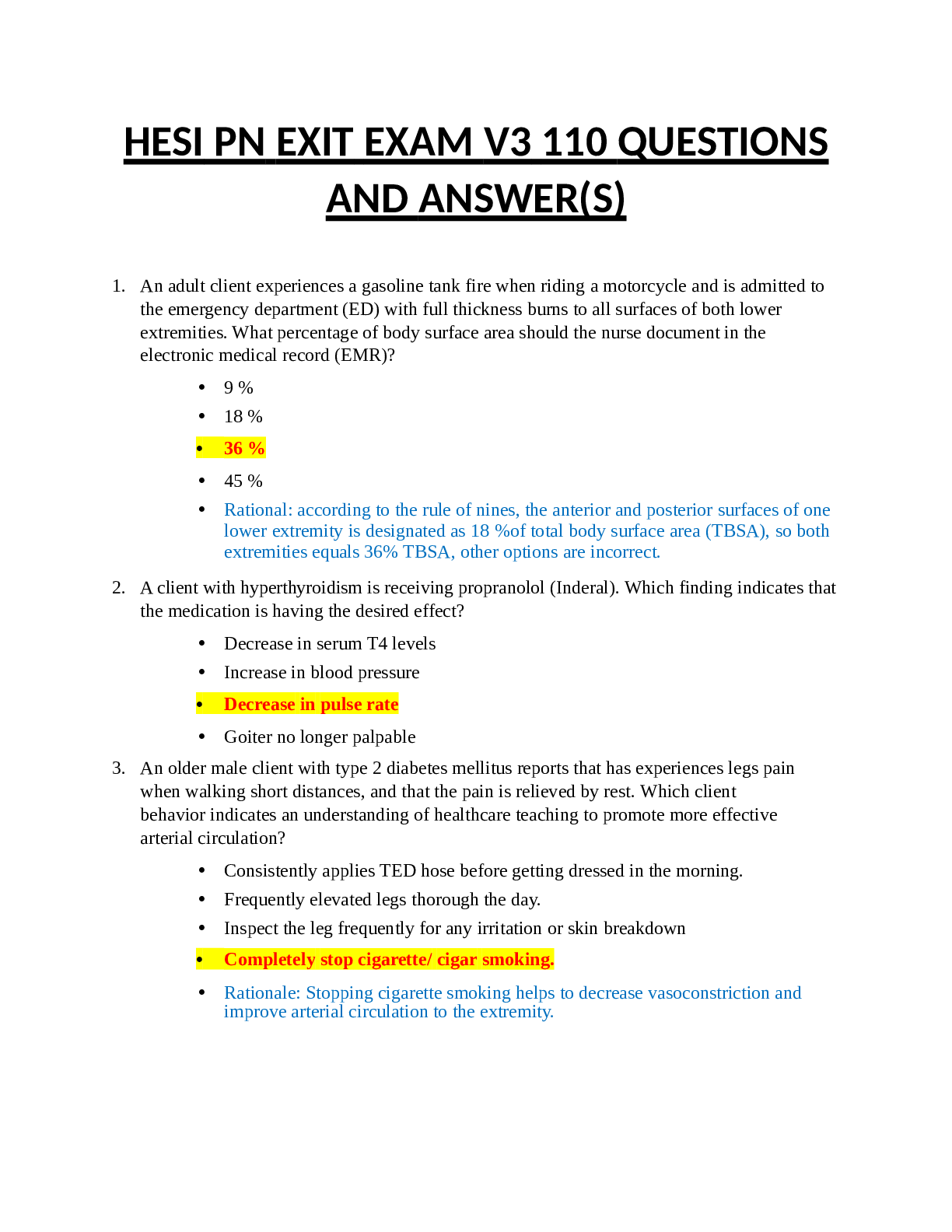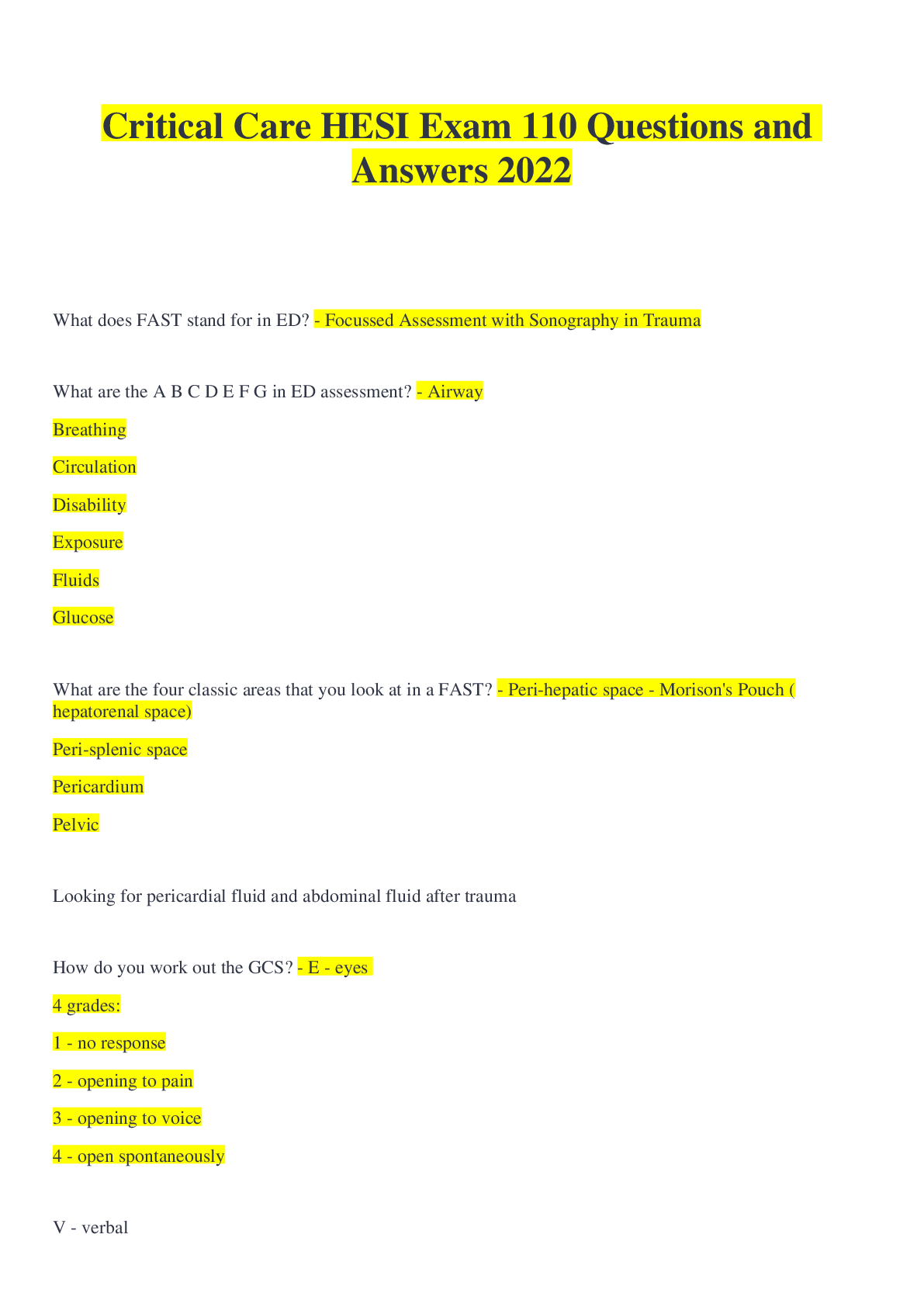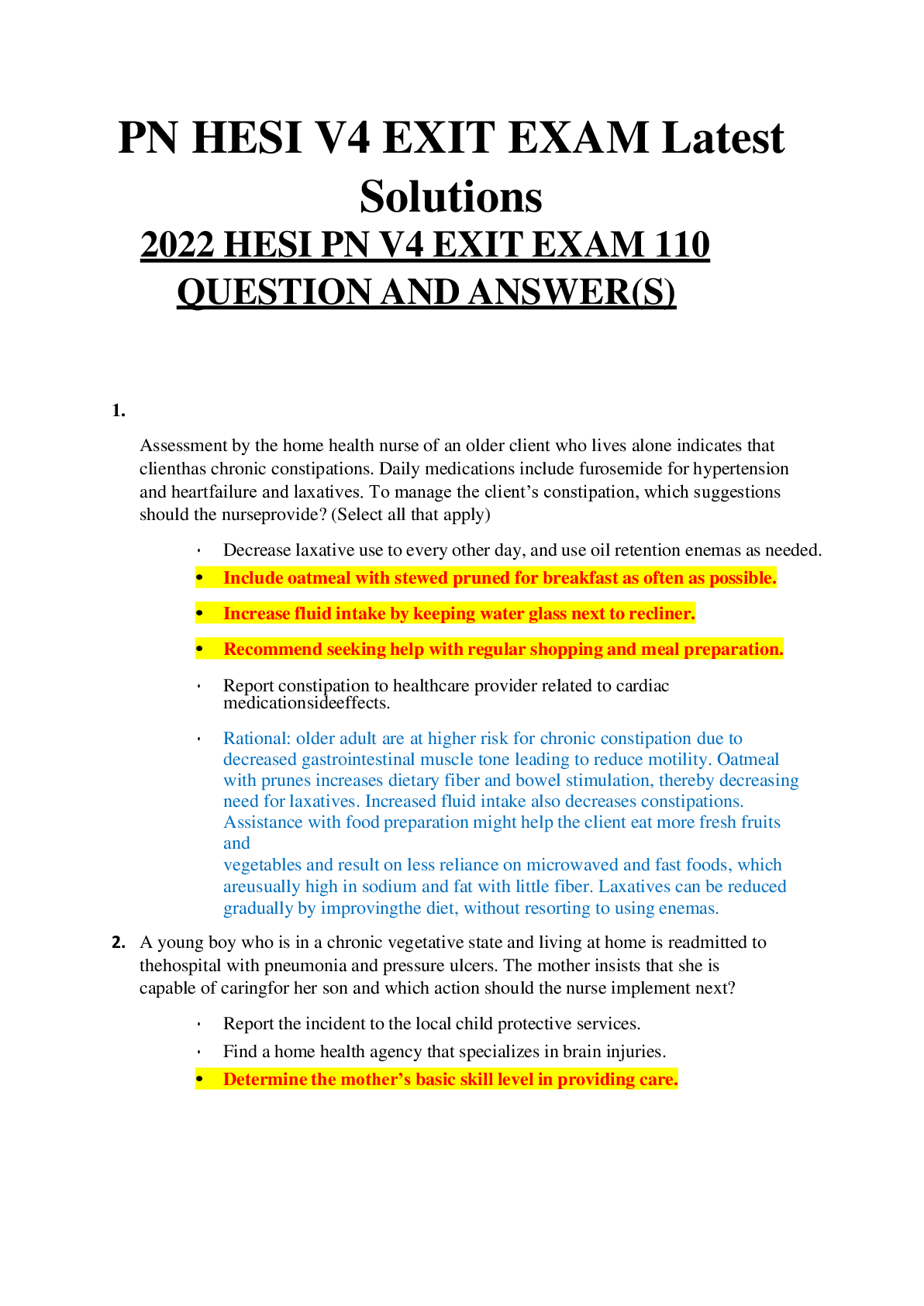2018 HESI PN V4 EXIT EXAM 110 QUESTION AND ANSWER(S)
Document Content and Description Below
2018 HESI PN V4 EXIT EXAM 110 QUESTION AND ANSWER(S) 1. Assessment by the home health nurse of an older client who lives alone indicates that client has chronic constipations. Daily medications i... nclude furosemide for hypertension and heart failure and laxatives. To manage the client’s constipation, which suggestions should the nurse provide? (Select all that apply) Decrease laxative use to every other day, and use oil retention enemas as needed. Include oatmeal with stewed pruned for breakfast as often as possible. Increase fluid intake by keeping water glass next to recliner. Recommend seeking help with regular shopping and meal preparation. Report constipation to healthcare provider related to cardiac medication side effects. Rational: older adult are at higher risk for chronic constipation due to decreased gastrointestinal muscle tone leading to reduce motility. Oatmeal with prunes increases dietary fiber and bowel stimulation, thereby decreasing need for laxatives. Increased fluid intake also decreases constipations. Assistance with food preparation might help the client eat more fresh fruits and vegetables and result on less reliance on microwaved and fast foods, which are usually high in sodium and fat with little fiber. Laxatives can be reduced gradually by improving the diet, without resorting to using enemas. 2. A young boy who is in a chronic vegetative state and living at home is readmitted to the hospital with pneumonia and pressure ulcers. The mother insists that she is capable of caring for her son and which action should the nurse implement next? Report the incident to the local child protective services. Find a home health agency that specializes in brain injuries. Determine the mother’s basic skill level in providing care. Consult the ethics committee to determine how to proceed. Rational: Although the mother states she is a capable caregiver, the client is manifesting disuse syndrome complications, and the mother’s skill in providing basic care should be determined. Further assessment is needed before implementing other nursing actions. 3. After the risk and benefits of having a cardiac catheterization are reviewed by the healthcare provider, an older adult with unstable angina is scheduled for the procedure. When the nurse presents the consent form for signature, the client asks how the wires will keep a heart heating during the procedure. What action should the nurse take? Explain the procedure again in detail and clarify any misconceptions. Notify the healthcare provider of the client’s lack of understanding. Call the client’s next of kin and have them provide verbal consent. Postpone the procedure until the client understands the risk and benefits. Rational: the nurse is only witnessing the signature, and is not responsible for the client’s understanding of the procedure. The healthcare provider needs to clarify any questions and misconceptions. Explaining the procedure again is the healthcare provider’s legal responsibility. The other options are not indicated. 4. In assessing a client at 34-weeks’ gestation, the nurse notes that she has a slightly elevated total T4 with a slightly enlarged thyroid, a hematocrit of 28%, a heart rate of 92 beats per minute, and a systolic murmur. Which finding requires follow-up? Elevated thyroid hormone level. Hematocrit of 28%. Heart rate of 92 beats per minute. Systolic murmur. Rational: although physiologic anemia is expected in pregnancy, a hematocrit of 28% is below pregnant norms and could signify iron-deficiency anemia. Other options are normal finding pregnancy 5. A client with osteoporosis related to long-term corticosteroid therapy receives a prescription for calcium carbonate. Which client’s serum laboratory values requires intervention by the nurse? Total calcium 9 mg/dl (2.25 mmol/L SI) Creatinine 4 mg/dl (354 micromol/L SI) Phosphate 4 mg/dl (1.293 mmol/L SI) Fasting glucose 95 mg/dl (5.3 mmol/L SI) 6. A clinical trial is recommended for a client with metastatic breast cancer, but she refuses to participate and tells her family that she does not wish to have further treatments. The client’s son and daughter ask the nurse to try and convince their mother to reconsider this decision. How should the nurse respond? Ask the client with her children present if she fully understands the decision she has made. Discuss success of clinical trials and ask the client to consider participating for one month. Explain to the family that they must accept their mother’s decision. Explore the client’s decision to refuse treatment and offer support Rationale: as long as the client is alert, oriented and aware of the disease prognosis, the healthcare team must abide by her decisions. Exploring the decision with the client and offering support provides a therapeutic interaction and allows the client to express her fears and concerns about her quality of life. Other options are essentially arguing with the client’s decisions regarding her end of life treatment or diminish the opportunity for the client to discuss her feelings 7. An adult client with severe depression was admitted to the psychiatric unit yesterday evening. Although the client ran one year ago, his spouse states that the client no longer runs, bur sits and watches television most of the day. Which is most important for the nurse to include in this client’s plan of care for today? Assist client in identifying goals for the day. Encourage client to participate for one hour in a team sport. Schedule client for a group that focuses on self-esteem. Help client to develop a list of daily affirmations. Rationale: clients with severe depression have low energy and benefit from structured activities because concentration is decreased. The client participate in care by identifying goals for the day is the most important intervention for the client’s first day at the unit. Other options can be implemented over time, as the depression decreases. 8. An adult who is 5 feet 5 inches (165.1 cm) tall and weighs 90 lb. (40.8 Kg) is admitted with a diagnosis of chronic anorexia. The client receives a regular diet for 2 days, and the client’s medical records indicates that 100% of the diet provided has been consumed. However the client’s weight on the third day morning after admission is 89 lb. (40.4 Kg). What action should the nurse implement? Examine the client’s room for hidden food. Assign staff to monitor what the client eats. Ask the client if the food provided is being eaten or discarded. Provide the client with a high calorie diet. Rationale: clients with an eating disorder have an unhealthy obsession with food. The client’s continued weight loss, despites indication that the client has consumed 100% of the diet, should raise questions about the client’s intake of the food provided, so the client should be observed during meals to prevent hiding or throwing away food. Other options may be accurate but ineffective and unnecessary. 9. A client exposed to tuberculosis is scheduled to begin prophylactic treatment with isoniazid. Which information is most important for the nurse to note before administering the initial dose? Conversion of the client’s PPD test from negative to positive. Length of time of the exposure to tuberculosis. Current diagnosis of hepatitis B. History of intravenous drug abuse. Rationale: prophylactic treatment of tuberculosis with isoniazid is contraindicated for persons with liver disease because it may cause liver damage. The nurse should withhold the prescribed dose and contact the healthcare provider. Other options do not provide data indicating the need to question or withhold the prescribed treatment. 10. The nurse walks into a client’s room and notices bright red blood on the sheets and on the floor by the IV pole. Which action should the nurse take first? Clean up the spilled blood to reduce infection transmission. Notify the healthcare provider that the client appears to be bleeding. Apply direct pressure to the client’s IV site. Identify the source and amount of bleeding. Rationale: the nursed should first assess the client to determine the action that should be taken. Patient safety is the priority; other options are not priority. 11. During a routine clinic visit, an older female adult tells the nurse that she is concerned that the flu season is coming soon, but is reluctant to obtain the vaccination. What action should the nurse take first? Determine when the client last had an influenza vaccination. Discuss the concerns expressed by the client about the vaccination. Ask about any recent exposure to persons with the flu or other viruses. [Show More]
Last updated: 1 year ago
Preview 1 out of 35 pages
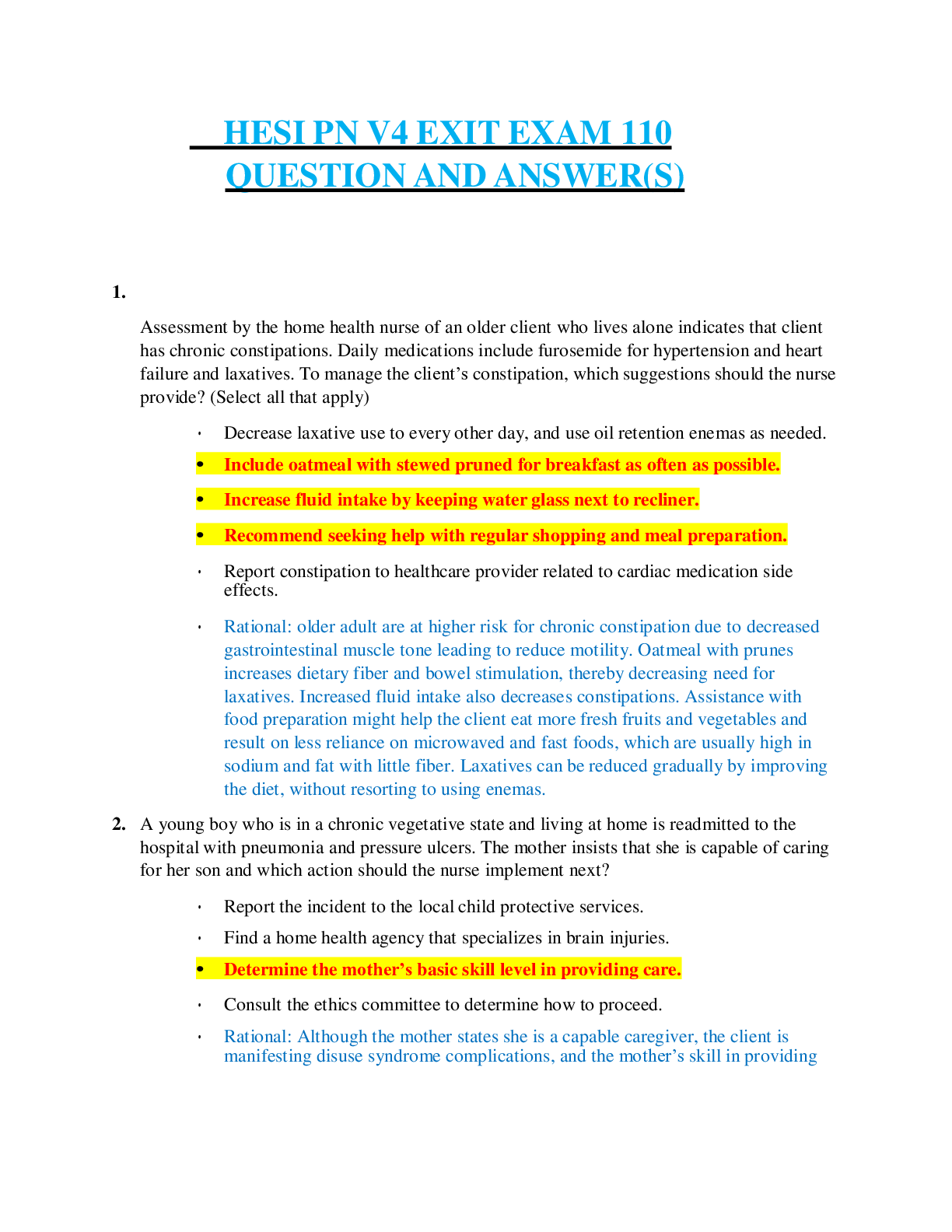
Reviews( 0 )
Document information
Connected school, study & course
About the document
Uploaded On
May 20, 2021
Number of pages
35
Written in
Additional information
This document has been written for:
Uploaded
May 20, 2021
Downloads
0
Views
44

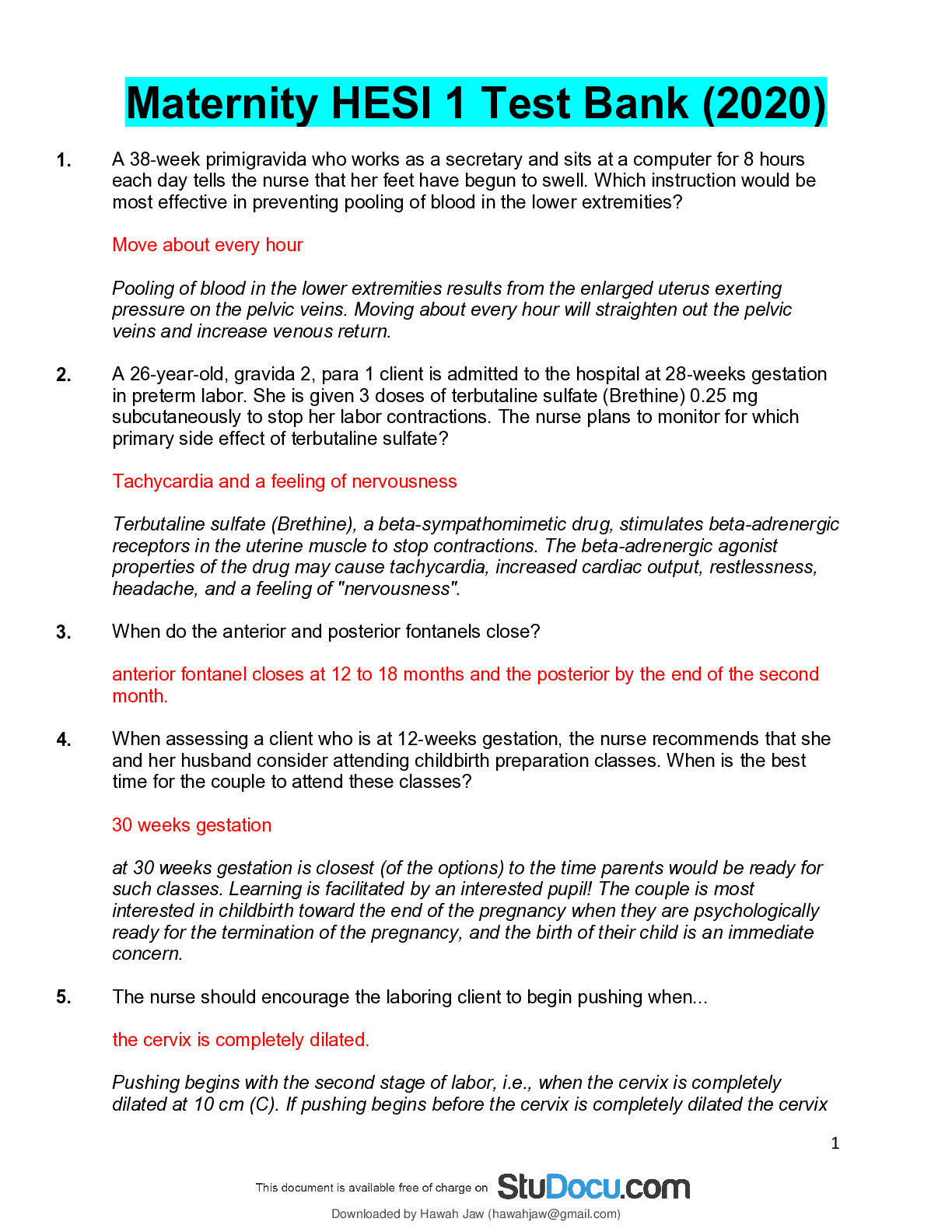

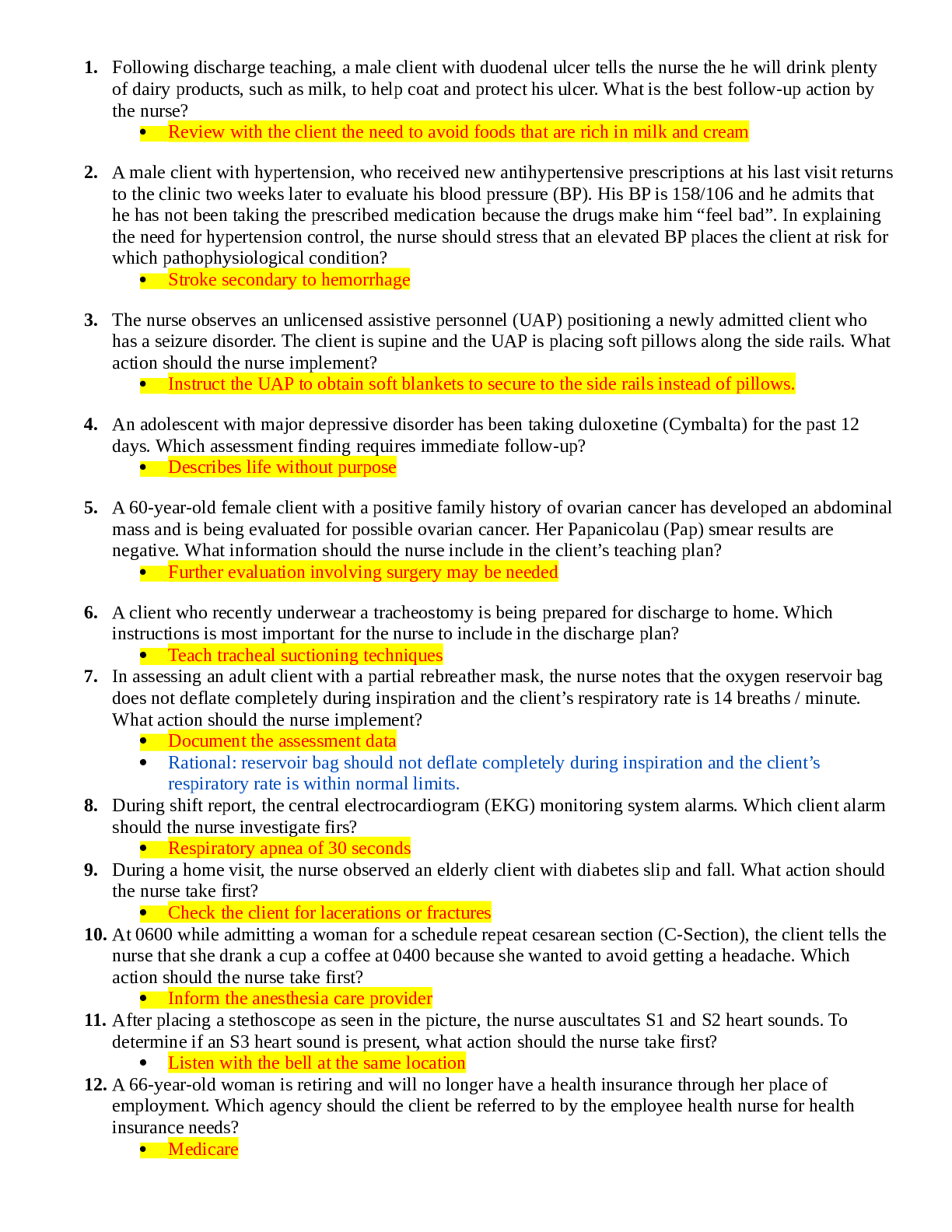
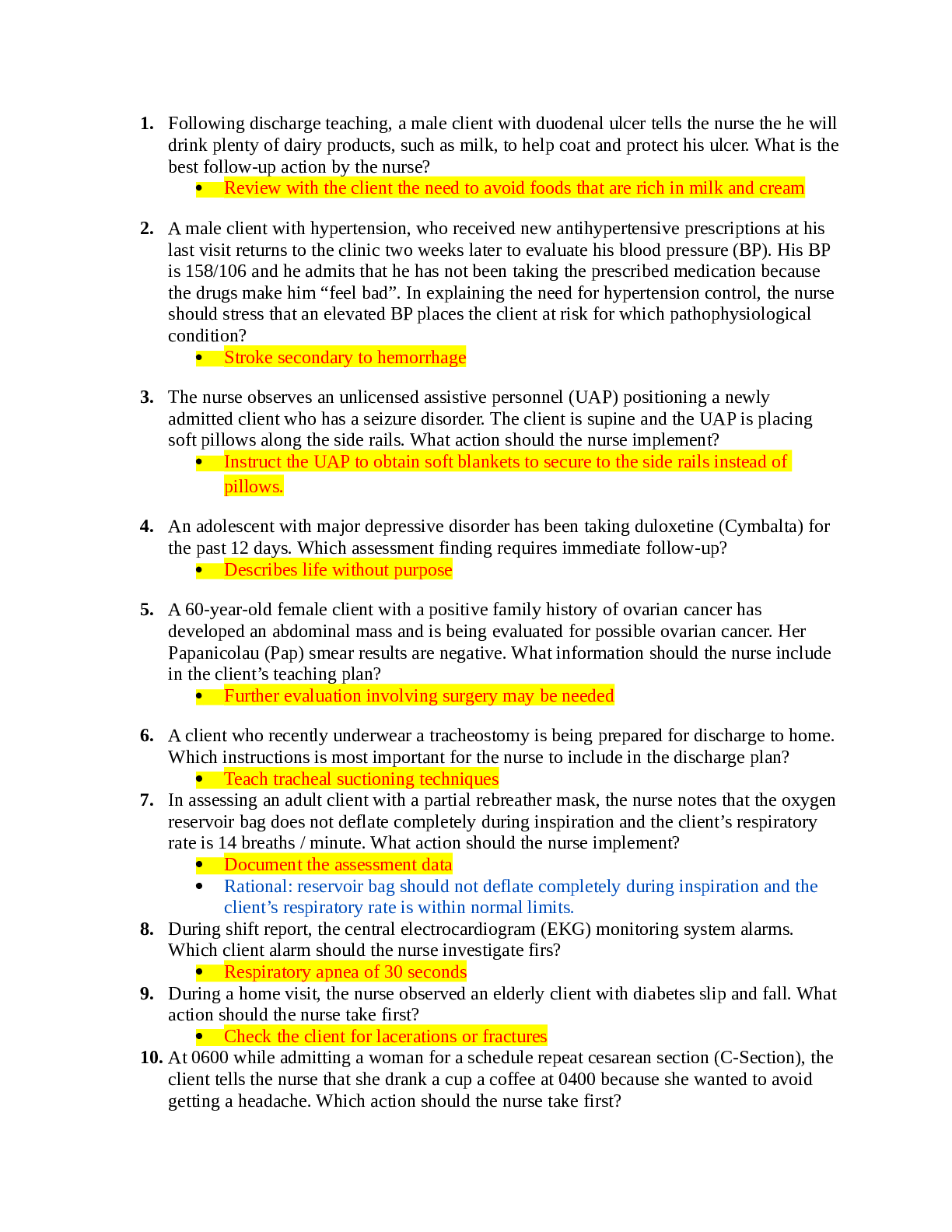

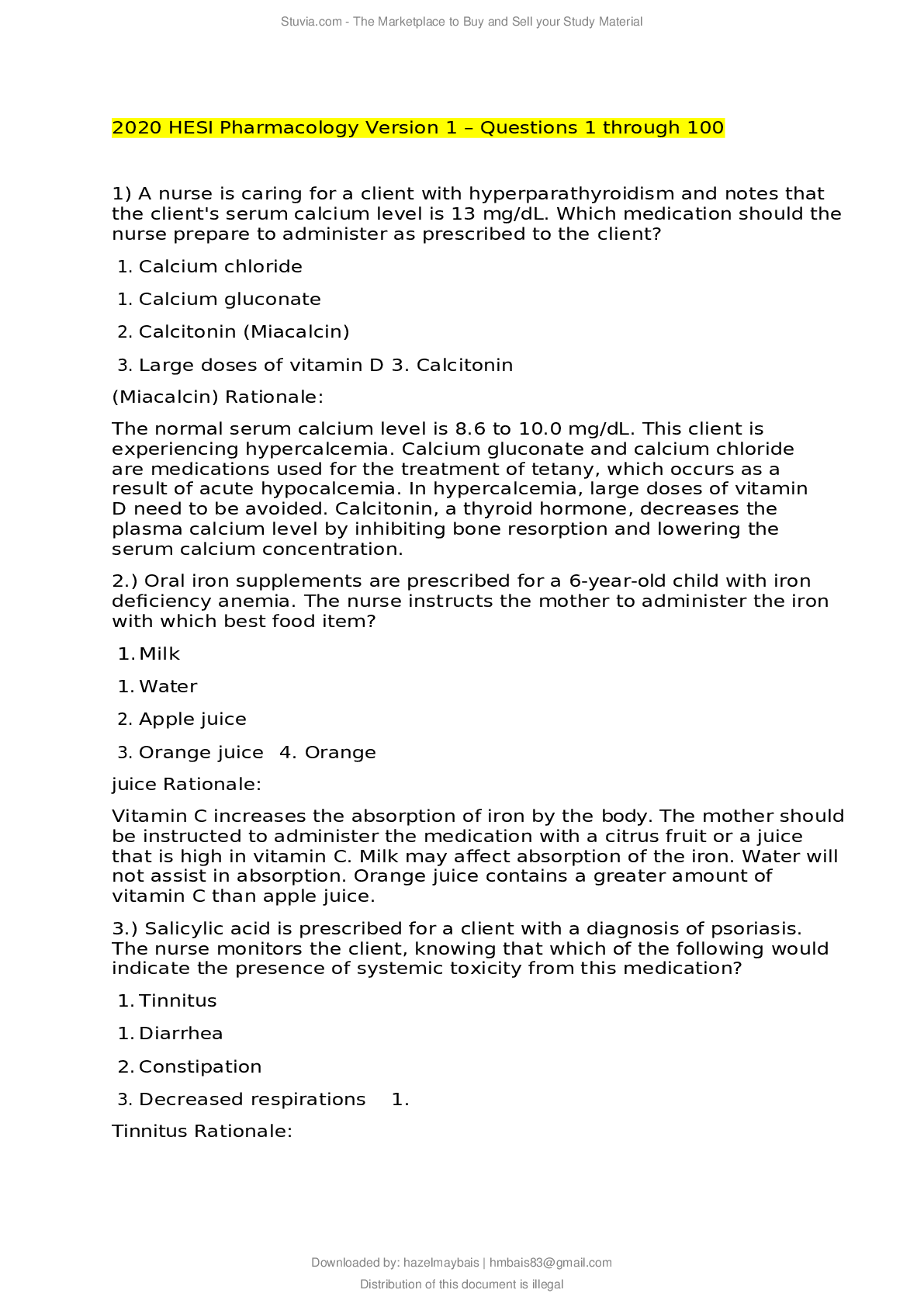
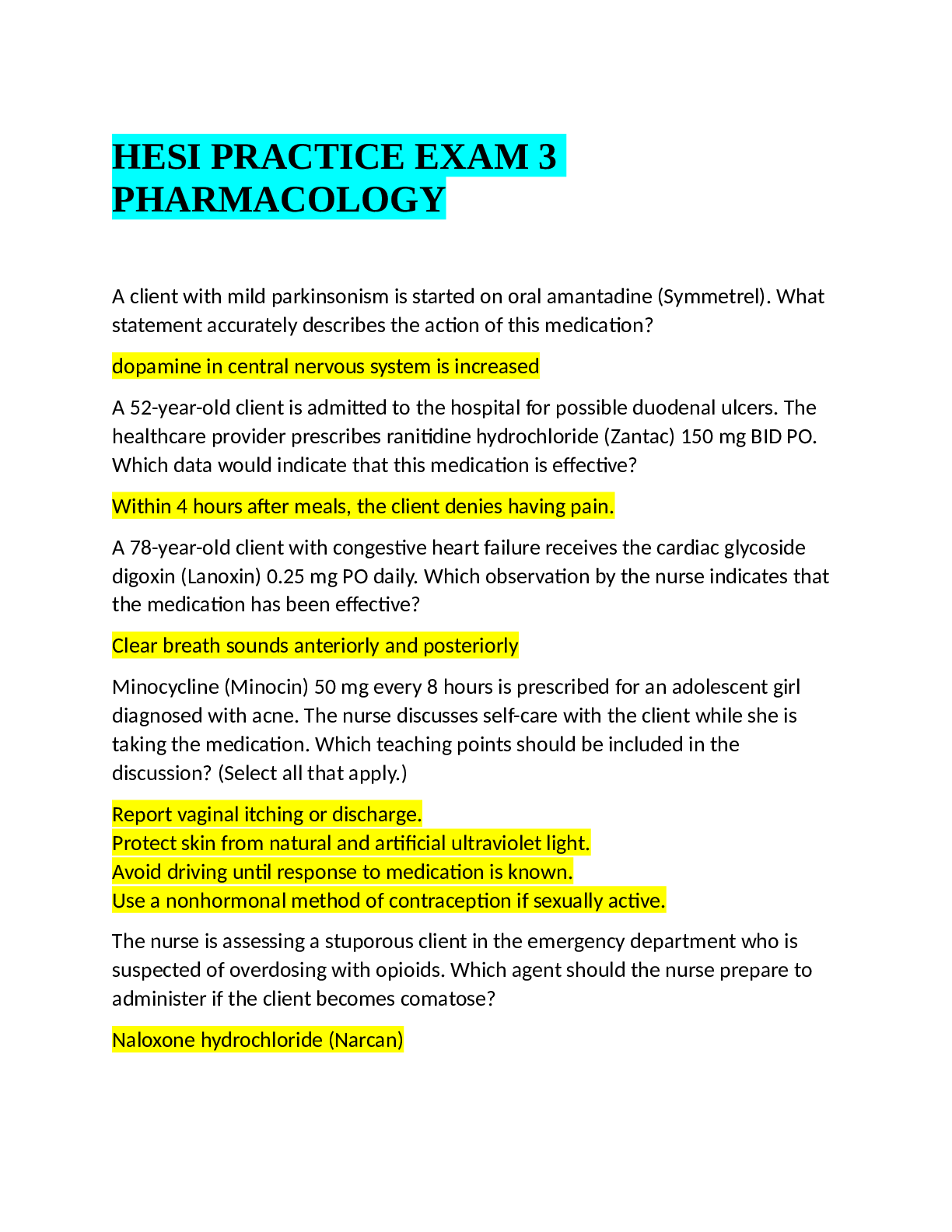
_removed.png)
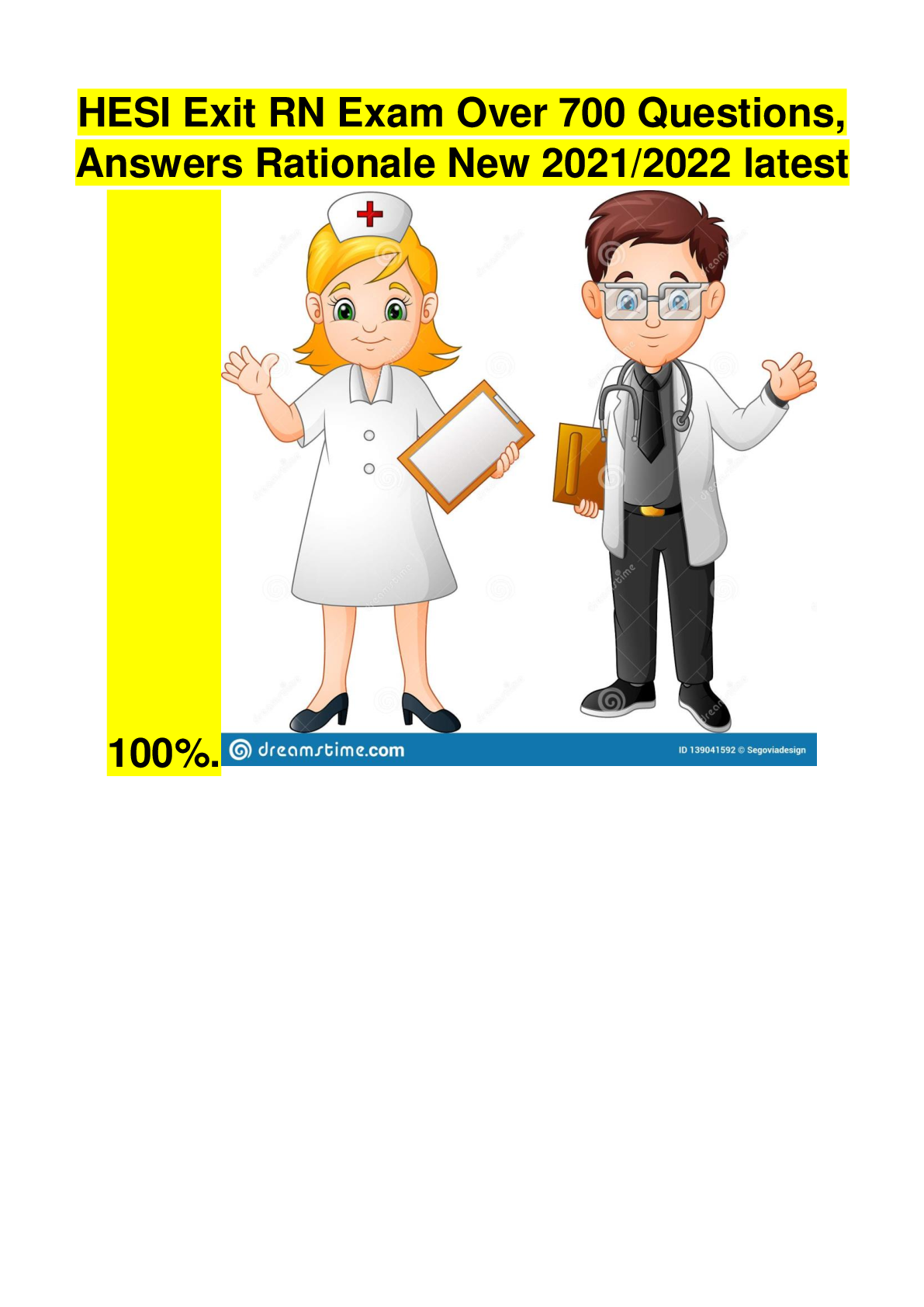
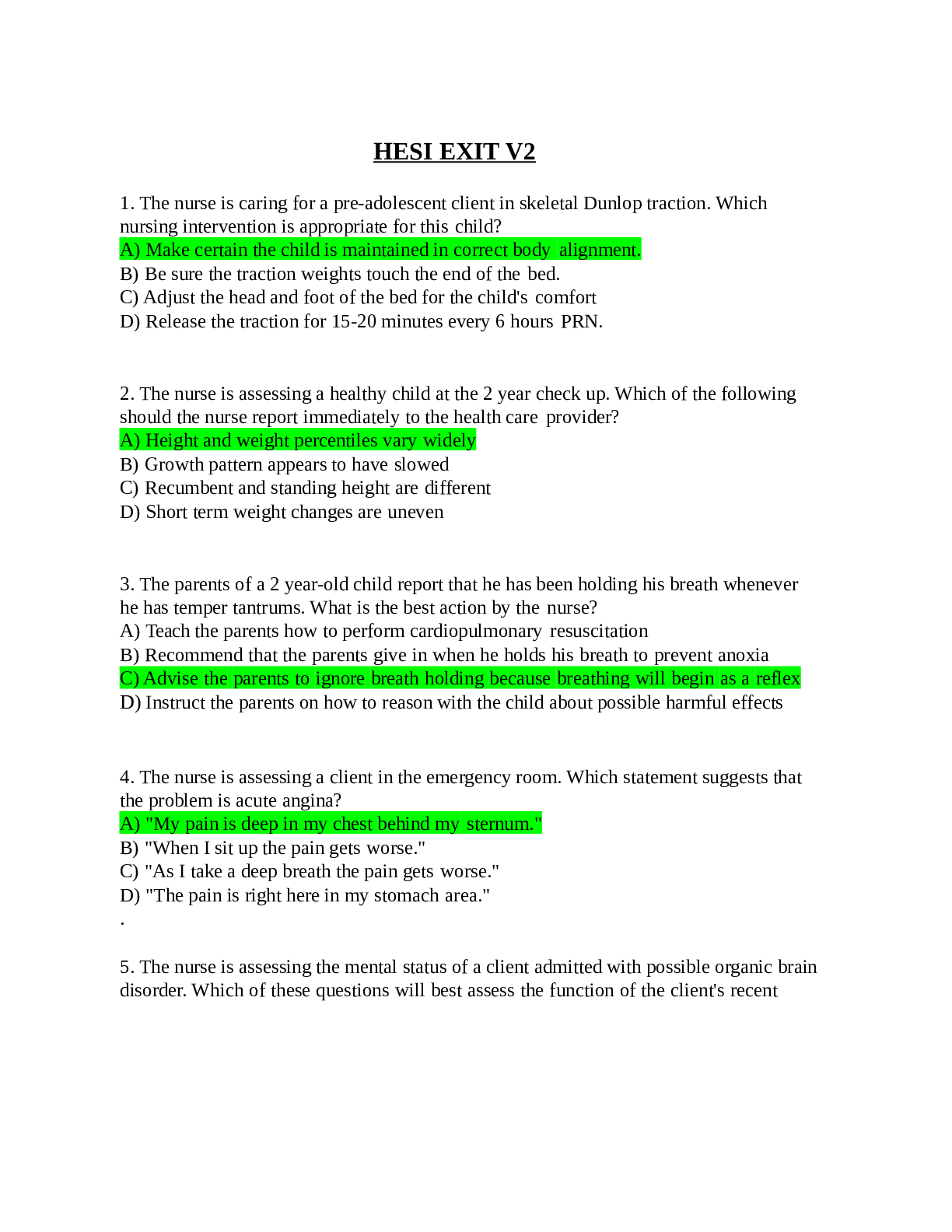
_merged.png)
